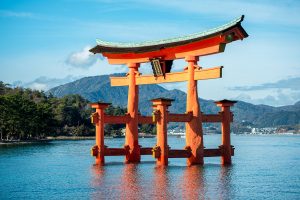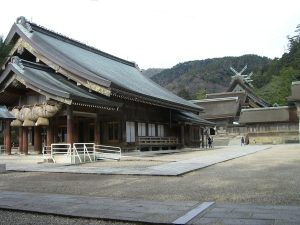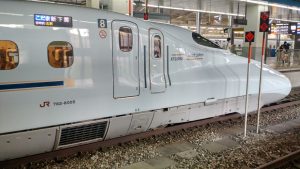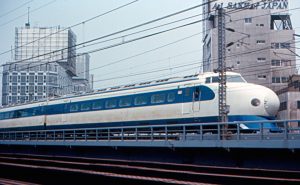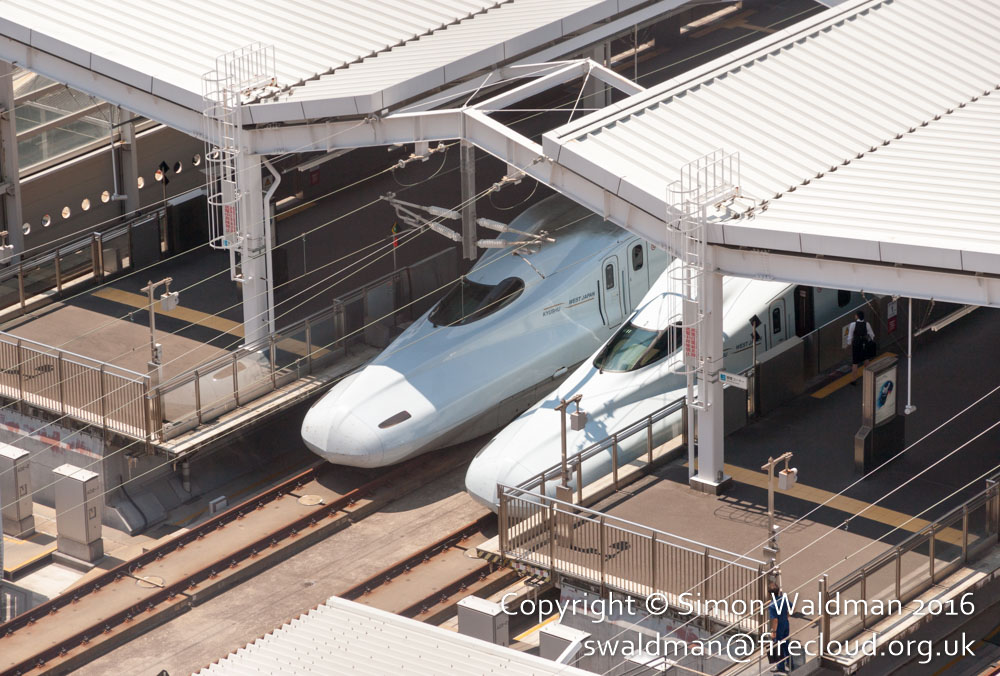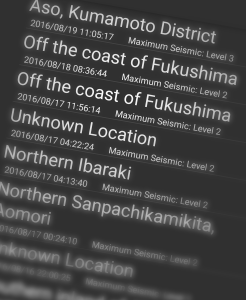My original plan for last weekend had been to visit Aso-san, the large volcano at the centre of Kyushu, via some circuitous scenic railways. That prospect became somewhat less worthwhile when I discovered that the top of Aso is closed due to activity, so I came up with an alternate plan, also involving trains and a volcano.
On Saturday I sent off for Kagoshima, which is the port city at the southern end of the main islands of Japan. I booked a slow route, on vintage trains running through the interior – a landscape of never-ending lush, green, forested hills and mountains.
After reaching a main station the day started on a shinkansen, because I needed to cover some distance to reach the other railways. There are many good things that I could say about the “bullet trains”, but one thing that they are not good for is sightseeing. The Kyushu shinkansen in particular spends perhaps 1/3 of its length in tunnels, due to the terrain of the island, and for much of the rest of the time it hides behind noise barriers. This makes a lot of sense for everybody except the passengers, but for those on board it means that one can’t see much!
I disembarked at Shin-Yatsushiro, transferred from the new to the old station, and found myself on a lonely platform in the middle of nowhere, looking out across fields. After a short wait my next vehicle arrived in the form of a steam train! I’m not sure how old the locomotive was (although it was far from modern – we’re not talking post-war steam here), but the carriages behind it were thoroughly modern, freshly designed for a tourist line. At the rear of the train was an “observation lounge”, which was of course rapidly packed with people, with windows on three sides and sofas and armchairs from which to watch the scenery go by. I’m less fussed about old trains, and indeed steam locomotion, than many, but a train with a separate loco and a clear view out the back is a pleasant novelty in modern times. An unfortunate side effect of steam power was the number of shouty kids running around… We puffed our way along a steep-sided river valley, swapping sides occasionally, until we reached the smallish hill town of Hitoyoshi and disembarked. At some point I noticed that for the first time since my arrival in Japan, we had left overhead electrification behind.
The next two trains were nearly identical on the outside, although with different interiors: the “Isaburo” and “Hayato No Kaze” expresses were both operated by 1970s DMUs with thoroughly rebuilt interiors, in one case described by the railway company as “Meiji-period”. Unfortunately the brief given to the interior designer seemed to have neglected to mention the scenic-railway, sightseeing nature of these trains, because the fitout included such authentic features as high-backed seats, quality hardwood privacy screens, and other such luxuries that prevented one from actually seeing out of the windows very easily! Nevertheless, this train followed an impressive mountain railway, climbing through Japan’s only railway spiral (where the line crosses over itself) and two switchbacks (where instead of going around hairpin bends, it simply switches direction and goes up Z-shaped sets of tracks and points) to reach a station at more than 500m above sea level. A couple of times we stopped for 5-10 minutes at rural stations with wooden buildings that could easily be a hundred or more years old, where the locals set out souvenir stalls on the platform. This sort of rural railway is a world away from the urban commuter networks elsewhere in Japan.
Here are some poor-quality phonecam pictures from the journey; better photos will follow at a later date…
[smartslider3 slider=4]
Eventually, the second of the trains descended from the hills to the southern coast, and followed the bay around towards Kagoshima. The defining feature of this area is the looming mass of the volcano Sakurajima – so named because it was an island in the bay until it made itself a bridge in 1914. Said bay is itself a coastal caldera from a far more ancient mountain. Sakurajima is much closer to town than Vesuvius is to Napoli, and unlike its European cousin it is active – sufficiently so that hiking near the crater has been prohibited for the last couple of months – but Kagoshima does have the partial protection of a mile and a half of sea between it and the volcano.
It so happened that I had arrived on the evening of Kagoshima’s annual fireworks display, which was a source of delight. The next morning I visited the Museum of the Meiji Restoration, where I was struck by how very recent Japan’s modernisation and industrialisation was, compared to Europe and America. Then it was onwards to the shinkansen station, where the distance that had taken most of the previous day to cover was devoured in just an hour and a half of smooth comfort to deliver me home – that’s the power of 160mph travel!
Here are some phonecam pictures from Kagoshima:
[smartslider3 slider=5]
